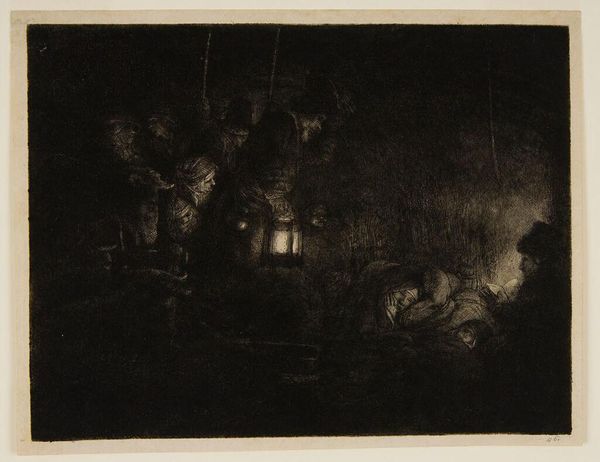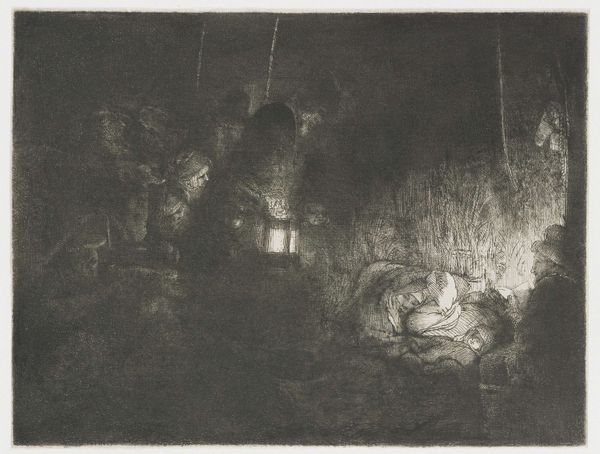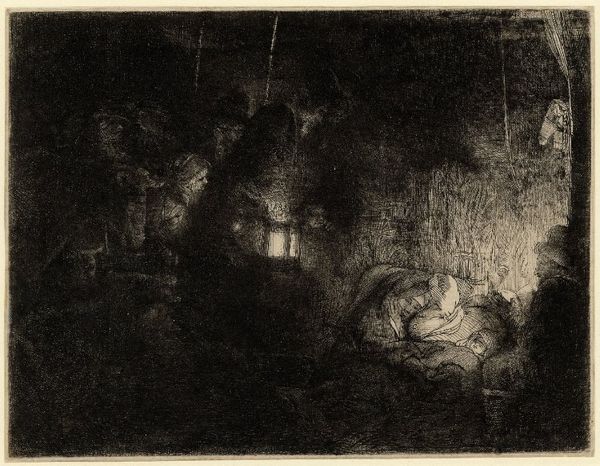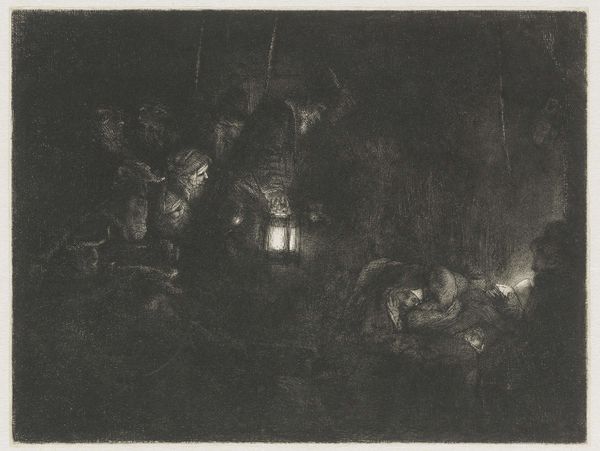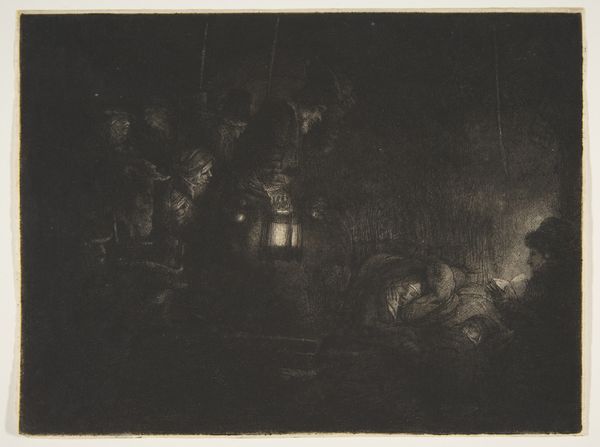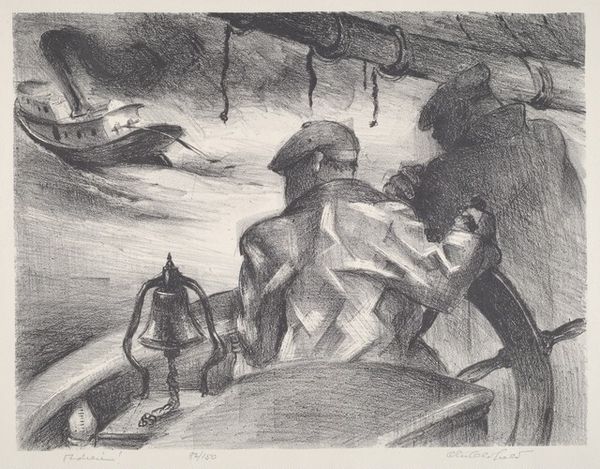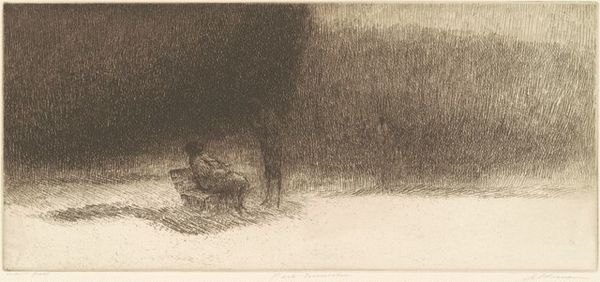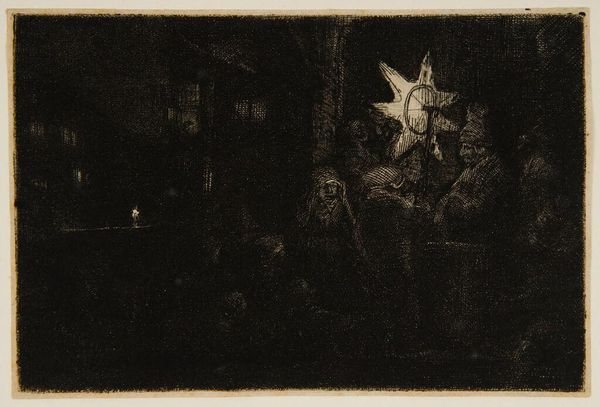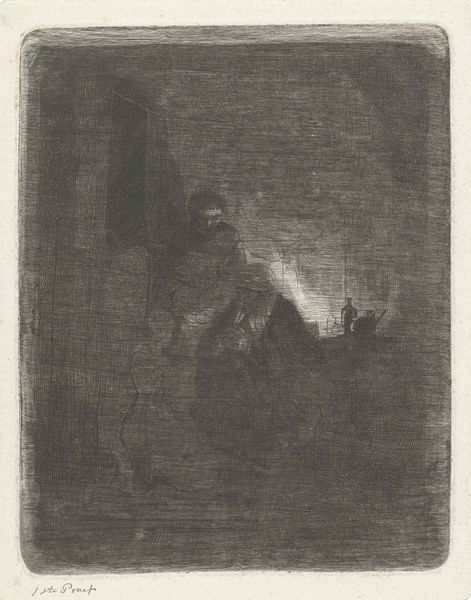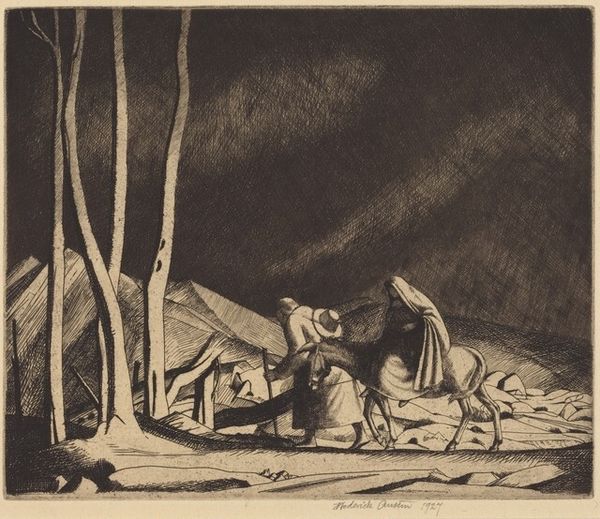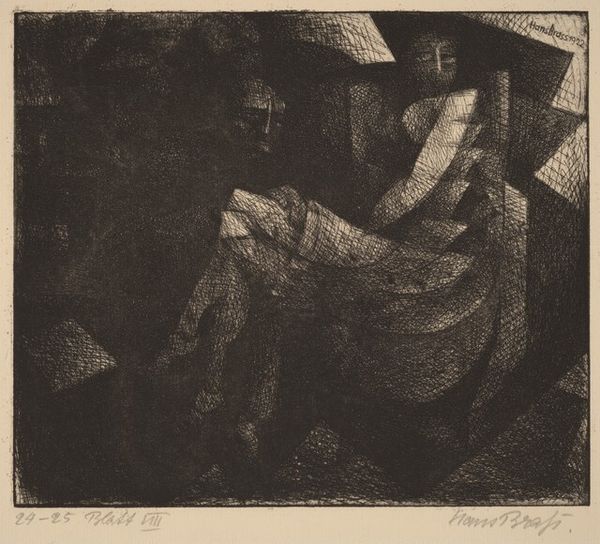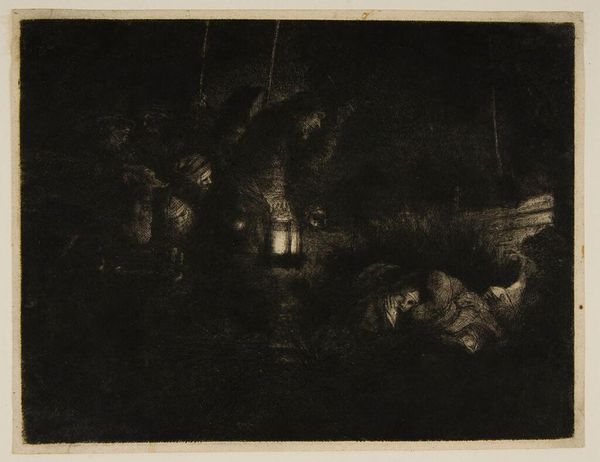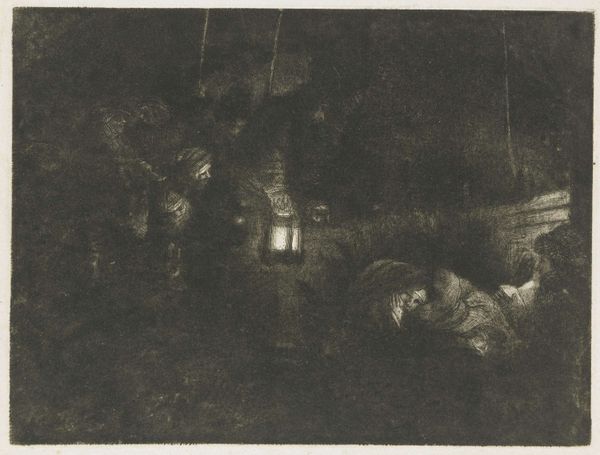
drawing, print, etching, paper, ink
#
drawing
# print
#
etching
#
landscape
#
figuration
#
paper
#
ink
#
genre-painting
Copyright: National Gallery of Art: CC0 1.0
Curator: Looking at George Overbury "Pop" Hart's "Campfire" from 1924, an etching rendered in ink on paper, I'm immediately struck by the overall atmospheric effect. The scene feels both intimate and remote. Editor: It certainly has a somber mood. The figures, are they gathered by the shore? The dark shades that dominate the image—a stark contrast between the small fire and vast water. It gives an ominous, perhaps tragic sensation. Curator: Indeed. Hart was keenly interested in depicting scenes of everyday life, often focusing on working-class communities. This print, while appearing simple, participates in a long tradition of representing communal life. Look how he positions these figures in relation to the light, crafting the scene into a study of human existence set against an implied wilderness. Editor: You can really tell through the materiality itself; see how the hazy aquatint renders the soft light of the fire, contrasting that with the solid, sculptural masses in the foreground. And while this does appear to simply document the landscape, the semiotic nuances certainly push past the work’s immediate aesthetic concerns to provide glimpses into labor, life, and ritual. Curator: That's a solid read on the print. In its historical context, Hart's work offered a portrayal of American social reality in the interwar period—not in a documentary manner but evoking a sense of shared human experience through suggested movement and quiet intimacy, particularly considering themes in Genre Painting at the time. The romantic undercurrents further question notions of realism so prevalent. Editor: Yes. Looking at the tonality—a monochromatic, velvety richness emerges; this provides a stark contrast to the industrialization emerging at the time, providing a pastoral aesthetic, removed from any sense of encroaching modernism. Curator: Ultimately, "Campfire" provides us with a window into how early twentieth-century American artists grappled with themes of community and environment. Editor: Agreed, I came to this artwork at first viewing with an emphasis on form. I can definitely move forward acknowledging the influence and visual importance this work had at the time of its creation and lasting relevance now.
Comments
No comments
Be the first to comment and join the conversation on the ultimate creative platform.
